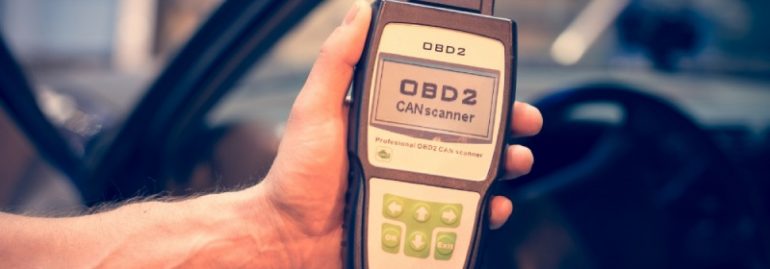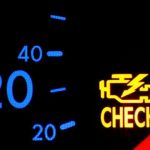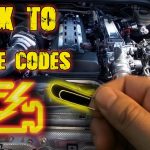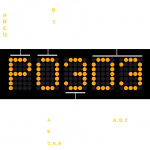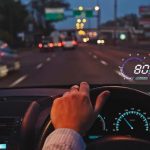What can a car scanner do? These “nonvolatile” memories are found in all vehicles and are very difficult to read unless you know how to use one. You can’t just plug in any old scanner and start scanning, however. You must buy a scanner that is designed for your car’s model year and make. The scan tool you choose will help you understand which code to read based on the symptoms and problems associated with it.
OBD trouble codes are stored in a “nonvolatile” memory
The OBD II system creates trouble codes to help your mechanic detect problems in the vehicle’s engine. These codes can include problems with the transmission, air conditioning system, and the battery. When these codes are triggered by a problem, the engine can respond by sending a message to the car’s computer to try and solve the problem. The message will then be displayed on the screen.
They are difficult to read
If you’ve been having trouble reading your car’s OBD2 codes, you’re not alone. There are many different reasons why these codes are displayed on your car’s dashboard. You can make the task easier by checking the manual that came with your scanner. It will tell you what the codes mean and what to do next. Most scanners come with both a paper manual and a CD-ROM that explains the codes in more detail.
An OBD trouble code scanner is an inexpensive way to read your car’s trouble codes. While traditional scanners simply display the codes on your dashboard, newer models will send the data to your smartphone or tablet for decoding. Some models even show you the repair options available for your car and how much it would cost to fix them. You can purchase these devices at your local auto shop or online. But remember that they are not cheap.
OBD trouble codes are made up of five characters – one letter and four numbers – and they identify different parts of your vehicle. These trouble codes can be broken down character-by-character, which can make the problem more apparent. By understanding trouble codes, you can pinpoint exactly what the problem is and what needs to be fixed. A car scanner is a must-have tool in a mechanic’s shop. The following tips will help you choose the right scanner for your needs.
They are stored in a “nonvolatile” memory
During the development of computerized automotive technologies, information was recorded in various memory devices. Only recently were these data made available to accident investigators. The information is just as crucial as tire mark distances or points of impact when it comes to accident reconstruction. In addition, the nonvolatile memory stores data on the vehicle’s speed, engine RPM, seat belt usage, airbag status, and more. Figure 1 shows one such device.
In a computer, there are two types of memory: volatile and nonvolatile. Volatile memory is stored for a limited time and then lost when the car is turned off. Nonvolatile memory is connected directly to the battery and maintains its data even if the vehicle loses power. In a car, the keep-alive memory (KAM) is a component of the car’s electronics that stores data on the number of drive cycles. KAM is constantly monitored by the PCM and if unexpected results occur, the PCM triggers the P0603 code.
When the radio is powered on, the processor accesses the nonvolatile memory 108 and stores the factory VIN. If the VIN is not present, the processor retrieves the factory VIN from the bus 106. When the code matches, the radio 104 is able to operate normally. Upon completion of the test, the radio returns to normal operation 208 and decision step 204.
They are manufacturer-specific
If you’re looking for a simple car code reader, you’ve come to the right place. Using a car scanner is a great way to diagnose your car’s problems. Most scanners work on most vehicles, but some can’t. These scanners are known by many different names and come in a variety of price ranges. Some are very basic, while others are more sophisticated and powerful.
Generic and manufacturer-specific codes are categorized by their first digits. Generally, generic codes are the most widely applicable across manufacturers. These codes are standardized by the Society of Automotive Engineers, but manufacturers can add their own codes, too. Global codes are 0 and 3 for example, while manufacturer-specific codes are 1 or 2-digits long. You can use a universal car scanner to diagnose most common car problems, or buy a manufacturer-specific one for your car’s make and model.
Whether you’re searching for a generic car scanner or a more advanced one, it’s essential to understand the difference between a generic code reader and a manufacturer-specific scanner. Basic scanners only give you a five-character code, and you must refer to the manufacturer’s website or standard DTC list to determine which codes are specific to your vehicle. A robust vehicle diagnostic scanner will give you a more complete code definition and fault alerts.
They can be cleared
One of the many uses for a car scanner is to clear a check engine light. But just because you can clear a code doesn’t mean the problem has gone away. The warning light could have come on because of a loose fuel-filling cap or a rare engine misfire. In that case, it might be better to wait to clear the code before fixing the problem. Otherwise, you might be leaving yourself open to future problems.
When you have the right car scanner, you can quickly clear the check engine light. You can also use it to troubleshoot problems like oil pressure and spark-plug misfires. A good one even lets you pull the vehicle’s identification number. But it’s not legal to do this. In some states, it’s illegal to do it. To avoid causing a collision or damaging yourself in the process, use the instructions that come with the scanner.
Keeping track of the car’s error codes is a useful way to monitor the health of your fleet or customer’s cars. Clearing codes allows you to identify patterns and determine what causes a car to malfunction. If you don’t clear them, you’ll end up doubling your work and second guessing the problem. Therefore, clearing codes should be an essential part of the repair process. However, there are some common errors that you can avoid.
They indicate a problem with a camshaft position sensor
If the code P0017 appears on your dashboard, the problem is most likely with the camshaft position sensor. The camshaft position sensor is part of the cylinder head, and its location and cable connections are subject to constant impact and heat. In some cases, the sensor may be defective, while others may just be damaged or have a faulty cable connection. You can either replace the camshaft position sensor yourself, or get your car serviced by a professional mechanic.
Other symptoms of a CMP sensor malfunction include engine stalling or jerking, which is potentially dangerous when you are driving on the highway. Fuel economy may be poor, and you may experience other problems related to the engine. The vehicle may also have difficulty accelerating past 30 miles per hour. Even worse, your car might lose traction while accelerating. If your car can’t maintain this speed, it might be time to replace the camshaft position sensor.
If the car scans for these codes, it means that your car has a problem with a camshaft motion sensor. This sensor controls the engine’s timing. If the sensor malfunctions, it can lead to engine performance problems and poor fuel economy. If you ignore the problem, it may cause further damage to your engine. For this reason, you should take your vehicle for a service as soon as possible.


